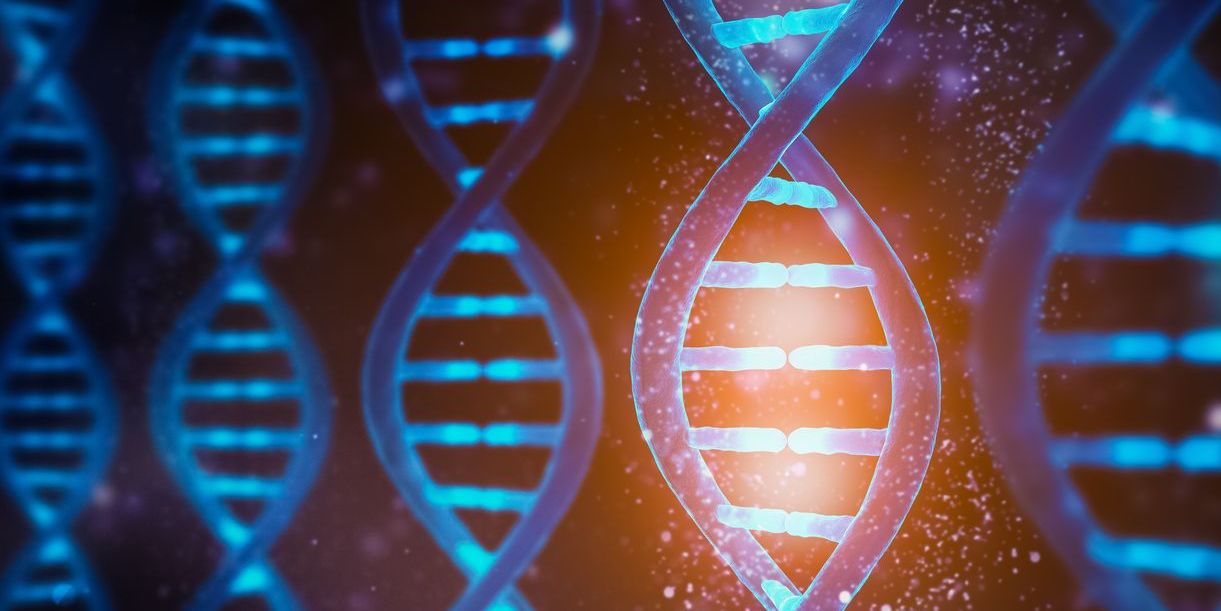We’ve come a long way in addiction treatment: we even have a basic understanding of how genes influence addiction. But that’s just one of the important recent developments in addiction treatment. In the past 20-25 years, the treatment paradigm has changed. we’ve moved from a stigmatizing and often counterproductive concept of addiction to one that’s inclusive, non-stigmatizing, and productive.
The old model was not really a model at all. It was a general idea that addiction was the result of a combination of moral failings, poor decision-making, and a lack of willpower. We now know that is, to be blunt, nonsense.
In the 21st century, we understand that addiction – which we now call substance use disorder (SUD) – is a chronic medical condition that responds well to an integrated treatment model that includes a combination of therapy, counseling, lifestyle changes, complementary supports, and medication if necessary.
Medication is, in fact, part of addiction treatment, which is something many people don’t know. Currently, medication-assisted treatment (MAT) includes medication for opioid use disorder (OUD) and alcohol use disorder (AUD). However, advances in genetic research on addiction may reveal new ways in which medication can help people in recovery.
This research is important, because there are millions of people in the U.S. with alcohol or substance use disorder, but there’s a significant gap between the number of people who need treatment and the number of people who receive treatment, called the treatment gap.
Genetic research into addiction can help us develop at least three new ways of approaching addiction treatment. It will help us:
- Identify genetic risk of addiction, which will help prevention
- Tailor treatment to the individual, by identifying genetic risk of co-occurring disorders, which can complicate the treatment process
- Develop new medications, which may help both treatment and prevention
Let’s take a look at this new research – but first, let’s take a look at the scope of the addiction problem in the U.S.
Substance Use Disorder (SUD) in the U.S.: Facts and Figures
Each year, the National Institutes of Health (NIH) partner with the University of Michigan to conduct a nationwide survey called The National Survey on Drug Use and Health (NSDUH) that includes data from over 70,000 participants over the age of 12. The size and annual nature of the survey allows researchers, as well as public and private entities to plan how, why, and where they’ll allocate resources related to the topics in the survey.
We retrieved the following data from the 2022 National Survey on Drug Use and Health (2022 NSDUH). First, let’s look at the number of people diagnosed with substance use disorder in the year before taking the survey.
Past Year Substance Use Disorder (SUD)
- Total diagnosed with SUD: 48.7 million (17.3%)
- Alcohol use disorder: 29.5 million
Drug use disorder (any aside from alcohol): 27.2 million - Marijuana use disorder: 19.0 million
- Opioid use disorder: 6.1 million
- Prescription pain reliever use disorder: 5.6 million
- Prescription stimulant use disorder: 1.8 million
- Methamphetamine use disorder: 1.8 million
- Cocaine use disorder: 1.4 million
Now, let’s look at the data on the number of people who received or didn’t receive treatment, which will tell us the size of the treatment gap in 2022.
Needed SUD Treatment/Received SUD Treatment
Total, 12+:
- Needed treatment: 54.5 million
- Received treatment: 13.1 million
75% of the people who needed treatment didn’t get treatment.
Age 12-17:
- Needed treatment: 9 million
- Received treatment: 1.1 million
62% of adolescents who needed treatment didn’t get treatment.
Age 18-25:
- Needed treatment: 10.1 million
- Received treatment: 1.6 million
84% of young adults who needed treatment didn’t get treatment.
Age 26+:
- Needed treatment: 4 million
- Received treatment: 10.2 million
75% of adults over 26 who needed treatment didn’t get treatment.
Those figures foreground the need to continued research into diagnosis and treatment for substance use disorder. Millions of people need support every year, and millions don’t get the type of treatment they need. Understanding genetics may help us close the significant treatment gap, which will improve our overall health and wellness.
Genes and Addiction/Substance Use Disorder: What We Knew Before
Before the publication of the study we discuss below, the most reliable information we had on the genetic component of substance use disorder (SUD) was confirmed by a Genome-Wide Association Study (GWAS) performed in 2014 that included the health and genetic records of more than a million people.
Here’s what they found:
- Evidence shows a quantifiable genetic component to alcohol and substance use disorders (AUD/SUD).
- Males: 55% of AUD/SUD risk attributable to genetic factors
- Females: 73% of AUD/SUD risk attributable to genetic factors
- Evidence shows an environmental component to alcohol and substance use disorders (AUD/SUD). Factors include:
- Peer behavior
- Ease of access
- Socioeconomic status
- Family dynamics
That’s where we stood before this study. We knew neither genetics nor environment tell the whole story about AUD/SUD risk, but rather a combination of genetic factors and environmental factors– nature plus nurture – increase overall risk of an individual developing AUD or SUD.
This new study doesn’t change that overall theoretical framework. Instead, it expands our specific understanding of the genetic component of the dynamic interaction between genes, and environment, i.e. the nature component of the nature/nurture construct.
Genes and Addiction/Substance Use Disorder: How New Research Can Help Us
The study “Multivariate Genome-Wide Association Meta-Analysis of Over 1 Million Subjects Identifies Loci Underlying Multiple Substance Use Disorders” analyzed genetic data from over a million people using a variety of genetic resources, including the U.S. Veterans Administration, the Psychiatric Genomics Consortium at the University of North Carolina, the BioVU Project at Vanderbilt University, and additional contributions from research at Yale University and the University of Pennsylvania.
The research team found 17 genomic loci significantly associated with the gene identified as addiction risk factor (addiction-rf), and 47 substance-specific loci. Quick refresher on gene basics: our genes – meaning DNA – are made up of long strings of amino acid pairs which form the DNA helix that most of us are familiar with. Each specific place on the helix contains a code with instructions to create proteins. The proteins then circulate through our bodies and guide all the work in our bodies.
Genes code for proteins and proteins do work. This is a foundational concept in biology.
The specific spot on the helix is called a locus, or location. Therefore, when you read the information in the next section of the article, the word loci means specific places on a strand of DNA that codes for a specific protein that does a specific job in the body. In this study, researchers identified the loci associated with addiction/substance use disorder (SUD).
Here’s how the Director of the National Institute on Drug Abuse, Dr. Nora Volkow, describes the importance of this type of genetic research:
“Genetics play a key role in determining health throughout our lives, but they are not destiny. Our hope with genomic studies is to further illuminate factors that may protect or predispose a person to substance use disorders – knowledge that can be used to expand preventative services and empower individuals to make informed decisions about drug use. A better understanding of genetics also brings us one step closer to developing personalized interventions that are tailored to an individual’s unique biology, environment, and lived experience in order to provide the most benefits.”
DNA is the code for life and living things. The more we understand how our DNA works, the more we understand about humans – and the more we understand about humans, the better we can help support people with chronic disease, such as addiction.
Genes and Addiction/Substance Use Disorder: The Results
Here are the specific findings the research team highlighted in the publication. First, they identified genetic loci for general addiction and for specific addiction risk.
- General addiction risk:
- 17 loci
- Substance specific:
- 47 loci
- Alcohol use disorder risk:
- 9 loci
- Tobacco use disorder risk:
- 32 loci
- Cannabis use disorder:
- 5 loci
- Opioid use disorder:
- One (1) locus, the mu opioid receptor
In addition, researchers identified 104 medications approved by the U. S. Food and Drug Administration (FDA) that reverse the addiction-rf transcriptional profile. What this means is that these medications – if well-researched and vetted for adverse side-effects – can prevent the expression of that gen. Preventing expression of that gene should, theoretically, decrease its contribution to general addiction risk, thereby reducing overall risk of developing addiction/substance use disorder (SUD).
Genes, Addiction, and Co-Occurring Disorders
The research team also identified correlations between the addiction-rf gene and psychopathological behaviors, including:
- Suicide attempts
- Self-medication for anxiety
- Self-medication for depression
Those last two bullet points are informative. They suggest the relationship between SUD and mood disorders may be related to an overall predisposition to self-medication, i.e. the use of alcohol or drugs to mitigate the pain and distress caused by negative emotions, negative patterns of thought, and negative psychological states.
Finally, the research team also identified correlations between the addiction-rf gene and the following:
- Maternal tobacco smoking during pregnancy
- ADHD
- Family history of serious mental illness
- Physical disability
- Socioeconomic disadvantage
In other words, the presence of the addiction-rf gene was associated with increased risk of an individual reporting presence of the bulleted items.
Genetic Research and Substance Use Disorder: What’s Next
Another component of this study was the diverse backgrounds represented in the data. Researchers used data from people from various ethnic groups – not just Europeans – in the study, which is an important step forward. Most research in the 20th and early 21st century focused on populations in North America and Europe. With the inclusion of people of African descent and a diverse sample pool from Yale, the University of Pennsylvania, Vanderbilt University, and the University of North Carolina, researchers expanded their evidence base.
Dr. Alexander Hatoum of Washington University discussed this aspect of the new research in a recent publication from the National Institutes of Health (NIH):
“Using genomics, we can create a data-driven pipeline to prioritize existing medications for further study and improve chances of discovering new treatments. To do this accurately, it’s critical that the genetic evidence we gather includes globally representative populations and that we have members of communities historically underrepresented in biomedical research leading and contributing to these kinds of studies.”
This study did just that, which bodes well for the future of genetic research. And the research itself bodes well for the future of addiction treatment. Identifying risk specific to each individual can help treatment professionals tailor both treatment and prevention efforts to address those specific needs, which will increase treatment efficacy and ultimately serve to improve outcomes for anyone who seeks treatment for substance use disorder.

 Kimberly Gilkey, RADT-1
Kimberly Gilkey, RADT-1 Timothy Wieland
Timothy Wieland David Abram
David Abram Mark Melden, DO/DABPN
Mark Melden, DO/DABPN Jeffrey Klein
Jeffrey Klein Nathan Kuemmerle, MD
Nathan Kuemmerle, MD Laura Hopper, Ph.D.
Laura Hopper, Ph.D. Rebecca McKnight, PsyD
Rebecca McKnight, PsyD Milena Dun, PhD
Milena Dun, PhD Brieana Turner, MA, LMFT
Brieana Turner, MA, LMFT Brittany Perkins, MA, LMFT
Brittany Perkins, MA, LMFT Joanne Talbot-Miller, M.A., LMFT
Joanne Talbot-Miller, M.A., LMFT Alexis Weintraub, PsyD
Alexis Weintraub, PsyD Kathleen McCarrick, MSW, LSW
Kathleen McCarrick, MSW, LSW Christina Lam, N.P.
Christina Lam, N.P. John P. Flores, SUDCC-IV-CS, CADC II
John P. Flores, SUDCC-IV-CS, CADC II David Dalton, Facility Operations Director
David Dalton, Facility Operations Director Amy Thompson
Amy Thompson Kelly Schwarzer
Kelly Schwarzer Jovanna Wiggins
Jovanna Wiggins Alexandria Avalos, MSW, ACSW
Alexandria Avalos, MSW, ACSW Michelle Ertel
Michelle Ertel Emily Skillings
Emily Skillings Amanda Irrgang, Registered Dietitian Nutritionist (RDN)
Amanda Irrgang, Registered Dietitian Nutritionist (RDN) Gianna Melendez
Gianna Melendez Jodie Dahl, CpHT
Jodie Dahl, CpHT Jordan Granata, PsyD
Jordan Granata, PsyD